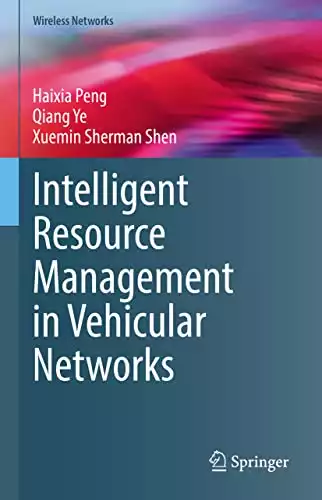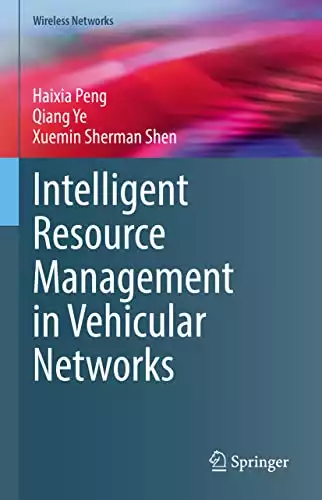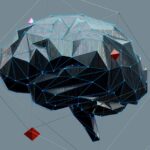Introduction to IoT in Traffic Monitoring: Era of Smart Management
Leveraging IoT to monitor traffic is one of the key pillars of smart traffic management systems. The advent of the Internet of Things (IoT) has ushered in a new era of smart traffic management, transforming how we monitor and manage traffic flow. By leveraging IoT technology, we can now analyze traffic patterns in real-time and make data-driven decisions to improve traffic control and enhance safety.
IoT sensors installed on roads, traffic signals, and even within connected vehicles themselves, gather invaluable data on vehicular speed, congestion levels, and traffic incidents. This wealth of information can then be processed and utilized to optimize traffic flow, reduce congestion, and improve overall road safety. It’s a brave new world where IoT leads the charge in redefining traffic management.
Table of Contents
How IoT is Revolutionizing Traffic Monitoring Systems
The role of IoT in reshaping traffic monitoring systems can’t be overstated. At the heart of this transformation lie IoT-enabled sensors, an integral part of any intelligent system aiming to enhance traffic control and safety. These wireless, connected sensors can be installed on roadways, traffic lights, and vehicles themselves, collecting real-time data about traffic volume, speed, and incidents. This continuous real-time condition monitoring allows for prompt responses to changes in traffic flow and helps in mitigating traffic-related issues promptly.
Beyond just traffic monitoring, IoT has extensive applications within the broader concept of ‘smart cities’. One such application is the Intelligent Parking Systems, which use IoT sensors to monitor parking spaces’ availability. It provides real-time traffic updates and parking availability information to drivers, enhancing the driving experience and contributing to efficient resource management. These systems allow cities to optimally manage parking resources and improve citizens’ experiences, reducing time spent searching for parking and consequently lowering traffic congestion.
Advancements in AI and machine learning further elevate the capabilities of IoT in traffic monitoring. Techniques such as decision trees and deep learning algorithms can analyze vast volumes of data collected by IoT sensors, offering actionable insights to manage traffic more effectively. Autonomous systems can use these real-time insights to adapt to changing traffic conditions, adjusting signal timings, rerouting traffic, or dispatching emergency services. As we continue to harness the power of IoT and machine learning, we move closer to realizing the vision of fully automated, intelligent traffic systems.
Also Read: AI in Traffic Management
Real-Time Traffic Management: The Role of IoT Devices
IoT devices are paving the way for real-time traffic management systems that boast improved efficiency and innovative applications. The transformative potential of these devices is increasingly being recognized, with many cities globally implementing smart transportation solutions. IoT devices allow for the collection and analysis of large volumes of data in real-time, enabling intelligent decisions that improve traffic flow and enhance driver safety. For example, real-time data on traffic volume can inform signal timings, ensuring smoother and more efficient traffic movement.
One of the significant advancements that IoT brings to the sphere of traffic management is the integration of edge computing. Edge computing processes data closer to where it is generated, significantly reducing latency and ensuring rapid response times, which is crucial for managing traffic in real-time. With access controls and smart resource allocation facilitated by IoT and edge computing, traffic management can be optimized to unprecedented levels. For instance, in situations of high traffic congestion, intelligent systems can reallocate lanes to manage the traffic better and avoid gridlocks, thus enhancing overall traffic management efficiency.
IoT devices enable a range of other applications within the ambit of smart transportation systems. Asset tracking, for instance, is a significant application that allows for real-time tracking of public transportation vehicles, ensuring optimal utilization and timely service. On a more personalized level, IoT devices can offer customized travel routes to individual drivers, accounting for factors like traffic congestion and road work. Future developments could even see these systems interfacing with autonomous vehicles, allowing for even greater coordination and efficiency on the road. As we continue to harness the capabilities of IoT in real-time traffic management, we edge closer to realizing a truly intelligent, responsive, and efficient transportation system.
Understanding the Technology: How IoT Devices Monitor Traffic
IoT technology is fundamentally about connected devices communicating and sharing data to create a network of intelligence. In the context of traffic management, IoT devices such as wireless sensors, cameras, and smart traffic signals collect and share real-time information about road conditions, vehicle speeds, traffic volumes, and incidents. This data is instantly transmitted to a central system or other connected devices, providing valuable insights for making informed decisions to optimize traffic flow, improve safety, and enhance the overall driving experience.
Advanced analytics techniques and machine learning play a pivotal role in processing this massive amount of data. Machine learning techniques can recognize patterns and predict traffic conditions, enabling proactive traffic management. For instance, these techniques can analyze past traffic data to predict congestion points, thereby allowing traffic control systems to adjust signal timings or suggest alternative routes to drivers. Incorporating blockchain technology into the IoT traffic monitoring system can improve data integrity, as the distributed ledger technology ensures that the data from various sensors is secure, accurate, and immutable.
The future of IoT in traffic monitoring promises even more innovative applications. Concepts such as network traffic routing packets could potentially be applied to real-world traffic management, with connected vehicles navigating the road network like packets of data in a network system. Similarly, asset-sharing models and EBT-based models, powered by real-time information from IoT devices, could transform public transportation and shared mobility services. The ‘intelligence’ in the Internet of Things allows for highly personalized experiences, such as customized travel routes and real-time updates on parking spaces or public transit schedules. As we continue to develop and integrate these technologies, the potential for IoT in traffic monitoring only continues to grow.
Also Read: What is the Internet of Things (IoT)?
Traffic Prediction and Control: The Power of IoT
IoT holds immense potential in transforming how traffic is predicted and controlled, playing a vital role in the development of efficient, future-proof transportation systems. One of the critical benefits IoT provides is the ability to accurately predict travel time. Using data from sensors and connected vehicles, IoT systems can analyze traffic flow in real-time and predict potential traffic jams before they occur. This ability to anticipate and proactively respond to traffic conditions can significantly improve the efficiency of public transportation services and reduce overall operating costs.
Apart from improving the efficiency of public transportation systems, IoT devices also provide valuable insights that can directly benefit drivers. Real-time data from IoT sensors can inform drivers about current traffic conditions, including potential delays and faster alternative routes. This swift response to changing traffic conditions can save valuable time for drivers, reduce fuel consumption, and minimize the stress of navigating through congested traffic.
IoT technology has found a place within the broader concept of ‘smart city’ applications. The predictive power of IoT, when combined with machine learning techniques like decision trees, can lead to advanced traffic control systems capable of dynamically adjusting to fluctuating traffic conditions. For instance, traffic signal timings can be optimized based on real-time traffic data, reducing unnecessary waiting times at intersections and improving overall traffic flow. As more cities globally embrace the potential of IoT in traffic prediction and control, we can look forward to more efficient, responsive, and sustainable urban transportation landscapes.
Improving Road Safety with IoT Traffic Monitoring
The application of IoT in traffic monitoring is not just a matter of convenience or efficiency; it also has profound implications for public safety. Intelligent transportation systems equipped with IoT devices like wireless sensors can monitor road conditions in real time, identify potential hazards, and alert drivers accordingly. The data collected by these systems allows city planners and traffic managers to make informed decisions about necessary infrastructure improvements, contributing to safer road conditions over time. For instance, data about frequent accident locations can prompt a review of those areas for design flaws or necessary signage.
Apart from enhancing safety, these IoT-enabled improvements also contribute to cost savings, a better customer experience for drivers, and an improved quality of life for city residents. By reducing the frequency and severity of traffic accidents, cities can cut down on the significant economic and social costs associated with road accidents. Furthermore, by helping to streamline traffic flow and reduce congestion, IoT traffic monitoring systems can contribute to a more pleasant driving experience and a less stressful commuting environment. As a result, the integration of IoT into traffic monitoring systems is a win-win scenario for all road users and city residents.
Case Study: IoT-Based Traffic Monitoring in Smart Cities
Smart cities across the globe are rapidly adopting IoT-based traffic monitoring systems to address urban congestion, improve public safety, and enhance overall quality of life. A prime example is the city of Barcelona, where IoT plays a pivotal role in managing city resources and improving efficiency. Through the integration of IoT technology, the city has successfully implemented smart parking solutions that use sensors to detect the availability of parking spots. This real-time information is relayed to drivers, reducing the time spent looking for parking, improving energy efficiency, and decreasing congestion.
In another instance, the city of Amsterdam has been utilizing IoT for optimal resource allocation and improved efficiency in its transportation system. Decision tree algorithms, coupled with data from IoT devices, have given the city a competitive edge in traffic management. The system can predict traffic congestion based on real-time and historical data, and preemptively adjust traffic light patterns to ensure smooth flow. This not only results in less traffic congestion, but also contributes to improved public safety and energy efficiency. The case studies of Barcelona and Amsterdam underscore the transformative potential of IoT in reshaping urban transportation landscapes. As more cities recognize the benefits of IoT-based traffic monitoring, this technology is poised to become a fundamental component of smart city applications worldwide.
Alleviating Traffic Jams: How IoT Plays a Crucial Role
In the quest to alleviate traffic jams, smart transportation systems enabled by IoT are becoming increasingly integral. IoT technology, which collects and analyses vast amounts of real-time information about traffic conditions, can significantly aid resource allocation and traffic management efforts. IoT devices like connected sensors, cameras, and smart traffic signals gather data about vehicle speeds, traffic volumes, and incidents, enabling transportation authorities to make intelligent decisions based on real-time insights.
For example, by using decision tree algorithms, traffic management systems can predict and manage traffic congestion more effectively. These algorithms process data from various IoT devices, identifying patterns in traffic conditions, and triggering appropriate responses such as adjusting traffic signal timings or sending alerts to drivers about potential delays. IoT plays a crucial role in enhancing driver safety. Real-time data from IoT devices can inform drivers about road hazards, allowing them to navigate safely and avoid traffic incidents. Beyond this, intelligent parking systems, another application of IoT, offer solutions to a significant cause of traffic jams – the hunt for parking. By providing drivers with real-time updates about parking availability, these systems can reduce congestion and improve the overall efficiency of urban transportation.
The Intersection of IoT and Big Data in Traffic Monitoring
The intersection of IoT and Big Data is revolutionizing the traffic monitoring landscape, creating intelligent transportation systems that are smarter, more efficient, and more responsive. AI-powered IoT devices and smart control systems gather and process vast amounts of data from interconnected devices such as traffic cameras, smart traffic signals, and vehicle sensors. This real-time monitoring, coupled with artificial intelligence algorithms, provides valuable insights into traffic conditions, helping to improve operational efficiency and public safety.
Big Data plays a pivotal role in interpreting the information collected by IoT devices. By analyzing data patterns and trends, intelligent systems can provide actionable insights about traffic flow and usage patterns. For example, understanding peak traffic times and common congestion points can help transportation authorities adjust signal timings or reroute traffic, ensuring a smoother flow of traffic. IoT and Big Data can enhance public transportation efficiency by tracking and predicting passenger demand, helping to optimize routes and schedules in real time.
Smart traffic management systems are another application of IoT and Big Data. These systems use interconnected smart devices and artificial intelligence to monitor and manage traffic in real time. For instance, smart traffic signals can adapt to changing traffic conditions, optimizing green light durations based on real-time traffic flow. Asset-sharing models, enabled by IoT and Big Data, also have the potential to reduce traffic congestion by encouraging more efficient use of vehicles and public transportation. As such, the intersection of IoT and Big Data is paving the way for smart transportation solutions that are more efficient, sustainable, and responsive to the needs of modern urban environments.
Harnessing IoT for Environmentally Friendly Outcomes via Smart Traffic Monitoring
The integration of IoT in traffic monitoring is not only enhancing the functionality of transportation systems, but also leading to more environmentally friendly outcomes. One such area where IoT has made significant inroads is air quality monitoring. IoT devices embedded with air quality sensors, placed across cities, can gather real-time data about pollution levels. This information is invaluable for city planners as they devise strategies to reduce emissions and improve the quality of life for residents. For instance, IoT data can be used to plan efficient public transportation routes and schedules, reducing the overall volume of vehicular emissions.
IoT also holds great potential in promoting energy efficiency. Smart city environments leveraging IoT can monitor and manage energy usage more effectively. For instance, intelligent transportation systems, equipped with IoT sensors, can optimize traffic flow and signal timings, reducing unnecessary idling of vehicles and thereby cutting down on fuel consumption. This not only leads to decreased greenhouse gas emissions, but also contributes to improved energy distribution across the city, as less energy is wasted due to traffic congestion.
IoT is also playing a critical role in other environmental monitoring efforts, such as tracking water quality. IoT sensors installed in water bodies can gather data about water contamination levels, facilitating quicker and more effective responses to pollution incidents. In the sphere of transportation, IoT-driven public transportation efficiency measures can also indirectly impact water quality by reducing oil and brake dust runoff from roads into waterways. Thus, the marriage of IoT and smart traffic monitoring is not just transforming transportation, but also significantly contributing to the creation of more sustainable and environmentally-friendly urban environments.
Challenges and Solutions in Implementing IoT for Traffic Monitoring
Despite the significant benefits of using IoT for traffic monitoring, its implementation is not without challenges. A primary concern is the security and privacy of data collected by IoT devices. With thousands of sensors collecting vast amounts of data, the risk of cyber-attacks and data breaches is a serious issue. The solution lies in robust security protocols and encryption techniques, as well as regular system audits to ensure vulnerabilities are identified and addressed promptly. Also, clear privacy policies should be in place that define how data is collected, stored, and used, ensuring compliance with relevant privacy regulations.
Another significant challenge is the issue of interoperability. With a plethora of different IoT devices from various manufacturers being used, ensuring these devices can effectively communicate with each other and work together is vital for a fully functioning, cohesive traffic monitoring system. Open standards and protocols can aid in resolving this issue, enabling different devices to interact seamlessly.
There’s the challenge of managing and analyzing the massive amounts of data produced by IoT devices. Advanced analytics, AI, and machine learning techniques can help tackle this challenge, turning raw data into actionable insights that can improve traffic management. Despite these challenges, the potential of IoT in traffic monitoring is immense, and with the right solutions, it can significantly revolutionize the way we manage and monitor traffic.
Looking Ahead: Envisioning the Future of IoT in Traffic Surveillance
As we look to the future, the integration of IoT in traffic surveillance promises to revolutionize the transportation landscape dramatically. A key development is the rise of intelligent vehicles. Equipped with IoT sensors and systems, these vehicles will be able to communicate with each other and with traffic management systems, providing real-time data on traffic conditions, road hazards, and more. This interconnectivity will allow for safer and more efficient road usage, reducing traffic congestion and improving overall transportation efficiency.
Autonomous systems will play a more prominent role in traffic surveillance. IoT-enabled drones and robots could be used for traffic monitoring, providing aerial views of traffic flow and identifying potential bottlenecks. In terms of public services, IoT can enhance emergency response times by providing real-time traffic data that can help emergency vehicles find the fastest routes. Similarly, public transportation efficiency can be improved by using IoT data to optimize routes and schedules, reducing travel times, and enhancing passenger satisfaction. As we move forward, it’s clear that the IoT-driven advancements will continue to reshape traffic surveillance, setting the stage for smarter, safer, and more efficient transportation systems.
Traffic Management Framework using IoT
Here’s a comprehensive strategy for developing a versatile and expandable traffic control framework utilizing IoT:
- A fundamental structure that acts as a springboard for future upgrades and enhancements will incorporate the following components:
- Data-gathering sensors that transmit information to a centralized cloud platform. Actuators on physical devices implement necessary changes, such as modulating water supply in leaky pipelines or adjusting streetlight brightness according to weather conditions.
- Field gateways assemble and compress data before forwarding it to the cloud platform. Cloud gateways facilitate secure data transfer between field gateways and the traffic management system’s cloud storage.
- A data lake stores raw, unstructured data prior to it being refined, processed, transformed, and transferred to a data warehouse for extracting valuable insights.
- A network of micro-services connect the data lake and the various applications.
- DO not run complex and expensive logic directly on the device. Run that on the data lake and focus on expeditious transfer of data using IoT and Edge computing.
- The data warehouse retains contextual information about connected objects and devices installed with sensors and actuators.
- Data analytics examine data from streetlight sensors on a centralized dashboard for light intensity adjustment. Machine Learning algorithms evaluate traffic patterns and trends from historical data in the data warehouse, then use this information to create predictive models for control apps that adjust average vehicle speed to prevent congestion.
- Predefined rules guide actuators to automate the operation and control of smart city objects and devices.
- User applications provide citizens with immediate notifications of traffic jams and congested routes. Desktop user apps for control rooms command actuators to adjust traffic signals, relieving congestion and optimizing routes.
Cross-solution integrations exist with traffic light or streetlight management systems, with control apps using ML models or predefined rules to suggest suitable output actions if air quality is poor.
Cities of any size can adopt this strategy. Based on financial and procurement limitations, they can begin with small-scale solutions such as a litter offense ticketing system or a smart parking app, and later expand the range of services.
References
Charles Nehme. IoT: Building a Connected World. Charles Nehme. Accessed 16 July 2023.
Vats, Satvik, et al. Automation and Computation: Proceedings of the International Conference on Automation and Computation, (AutoCom 2022), Dehradun, India. CRC Press, 2023.












